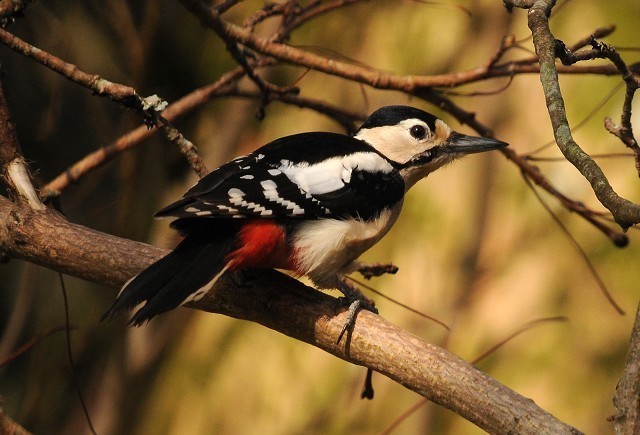To target conservation action effectively, we need to know which bird populations are increasing, and which are declining. The volunteer-based BTO/JNCC/RSPB Breeding Bird Survey (BBS), coordinated by BTO, is the main survey of the UK's terrestrial birds, and provides population trends for more than 100 species at the UK level. However, bird population trends can show huge variation across different regions and habitats, so it's essential that we survey a representative sample of BBS squares.

Great Spotted Woodpecker, Brockloch nr Carsphairn, Dumfries & Galloway (Photo: Jim Woods)
In Scotland, BBS coverage has ranged between 250 and 400 squares per year, roughly 10% of the UK total. This allows us to determine specific Scottish population trends for around 50 species — however, counts of many species, such as Great Spotted Woodpecker, Long-tailed Tit, Garden Warbler and Sparrowhawk, are still too low to calculate Scottish trends, or to contribute to wild bird indicators. Indicators are formed by combining the trends of birds in specific habitats (such as woodland or farmland) to give an overall indication of habitat quality.
To address this problem, BTO has developed a programme to enhance survey coverage in Scotland, in partnership with Scottish Natural Heritage and the Forestry Commission. The focus of this project is on woodland birds, and the aim is to improve our ability to determine trends in birds of woodlands and adjacent habitats, such as Spotted Flycatcher, Tree Pipit and Redstart. We are also aiming to increase the species composition of the woodland bird indicator for Scotland, to make it more representative.

Garden Warbler, West Tarbert, Argyll (Photo: Mark Hancox)
As a result, we need birdwatchers to help us keep track of the changing fortunes of the wild birds in Scottish woodlands, by surveying a Scottish woodland square for the Breeding Bird Survey. The survey involves two spring visits to a specific 1-km square, to count all the birds seen or heard, so requires reasonable bird identification skills. If required, a free CD of the songs and calls of over 70 British species is available, and the BTO also runs bird ID training courses.
Of course, BBS covers all parts of the UK, so if you are interested, but don't live in Scotland, we would still like to hear from you! If you'd like to take part, please go to www.bto.org/bbs, and follow the links to sign up for BBS. This will put you in touch with your Regional Organiser, who will allocate you a 1-km BBS square in your region, and give you full survey instructions. Once you have been allocated a square, you can use BBS-Online to view previous records from your square, and submit your BBS counts.
For more information about how BBS results are used in science and conservation, please see the BBS website: www.bto.org/bbs, or email bbs@bto.org.

